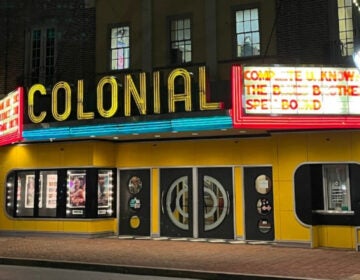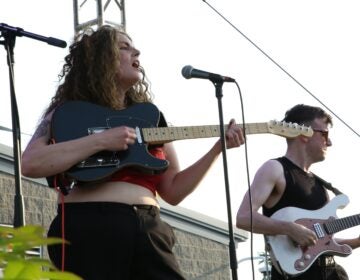Chagall exhibit is aperitif to Paris-inspired art festival
The Philadelphia Museum of Art is jumping the gun.
Next month, the Philadelphia International Festival of the Arts descends on the city with 1,500 artists and 135 events transforming the City of Brotherly Love in the City of Light. The festival is inspired by the explosion of creativity in Paris between 1910 and 1920.
This month, Marc Chagall jump-starts the festival at the Art Museum.
Conceived to complement the citywide festival, “Paris Through the Window: Marc Chagall and his Circle” opens March 1, drawing mainly from the museum’s holdings of Chagall and his French contemporaries.
Similar to the museum’s Picasso show last spring, the exhibit in the Perelman Building puts Chagall in the context of his time. The two giants of modernism were both foreigners living in Paris, but from the opposite sides of town.
Chagall was born in Russia in 1887, but he liked to say he was born again in Paris in 1911 when he got a studio in the La Ruche building, in the Montparnasse section of the city. Chagall would say, “In La Ruche, you either became famous or dead.”
“These were immensely poor artists,” said curator Michael Taylor. “They had no visible means of support. They were living hand to mouth. You have to rise out of that, and some of them never became famous: Chagall’s great friend, Moïse Kogan, is forgotten today.”
There was no supportive gallery system at the time, so artists could only toil in obscurity until their big break. Taylor points to the artist Chaim Soutine, who was a nobody until Albert Barnes (yes, that Albert Barnes) came to his studio in La Ruche and bought everything.
To survive, artists at La Ruche (The Beehive) supported one another as a community. That kind of synergy is the touchstone for the Philadelphia International Festival of the Arts, which will bring artists from every discipline together into the city at the same time.
In Paris, the collaborative spirit was epitomized by the Ballets Russes, a Russian modern ballet troupe. Chagall was tangentially involved with the troupe; he was the student of Nicholas Roerich and Leon Bakst, two artists who designed sets. The Oriental aesthetic of the Ballets Russes influenced nearly every artistic discipline at the time, from poetry to home decor.
“For Chagall, the Ballets Russes and the circle of artists represented what advanced art was, both in Russian and what it communicated to the West,” said curator Anna Vallye. “It was something to aspire to.”
Some original design sketches from the Ballets Russes have been in the Art Museum collection since the 1940s, but have never been seen publicly until this show.
WHYY is your source for fact-based, in-depth journalism and information. As a nonprofit organization, we rely on financial support from readers like you. Please give today.




